What Poop Belongs To What Wild Animals With Pictures
This story originally featured on Field & Stream.
A lot of things volition lie to you in your life, only non poop. Shut examination of animal scat will help you identify non only the species but how recently the creature was there, its sex, what it ate, and fifty-fifty where it might exist going.
Below is everything y'all should know (and peradventure more than you want to know) about eleven common critters in the US. And then grab a stick, and allow's poke some poop.
Coyote
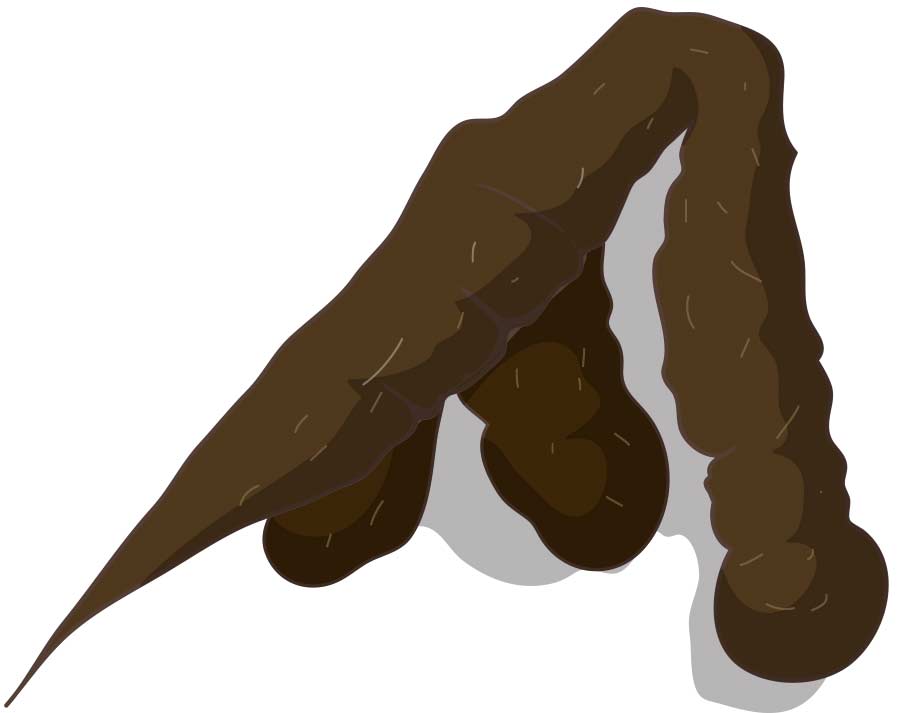
Coyotes are like kids who want to show you their scat. They get out information technology in the middle of roads, at trail crossings, and other prominent spots. Information technology's a manner of communicating with other coyotes, both inside their pack and to intruders. Coyotes get out tubular scat with tapered ends, oftentimes an inch in diameter. In areas that have both wolves and coyotes, it tin be difficult to distinguish betwixt the 2. This is considering coyotes get out big poop for their size and it varies greatly. In winter, the scat tends to be darker, with more than fur and os fragments mixed in. The ingestion of fur oftentimes leads to twisted, rope-like droppings. In summer, when they eat more vegetable matter, scat is often lighter and brighter equally a effect of berries and fruit in the diet.
Fox
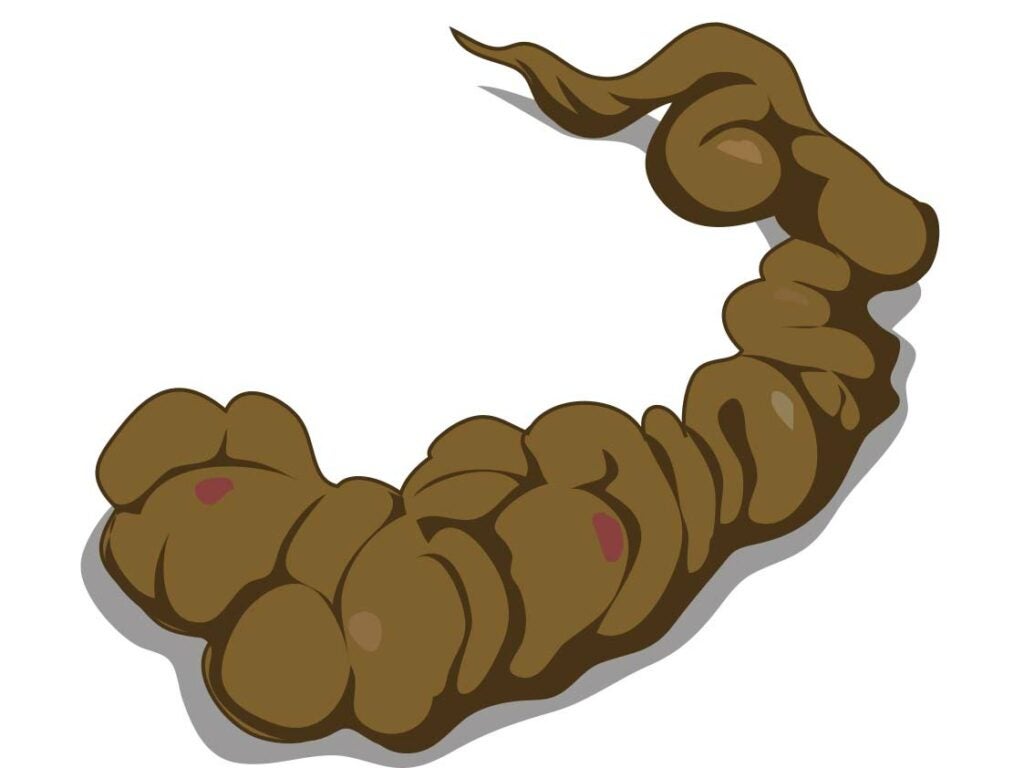
Foxes once lived chiefly in rural areas. Merely, like and so many of us, they've likewise adapted to urban areas. Typically, their droppings are about two to three inches long with pointed ends. They can range in colour from light tan to nighttime brownish. Their nutrition in rural areas consists of small birds and mammals for long periods of the twelvemonth, resulting in scat that is long, twisted, and contains bits of bone and fur. In urban areas, where they swallow more birdseed, bread, and a lot of McDonald's products, their carrion look more like those of a small dog. It should be noted, that almost nothing in the wild smells as bad as smeared fox poop. Play a joke on droppings pose a number of health risks. You shouldn't chew, handle, or inhale them. This holds true for most crap.
Raccoon
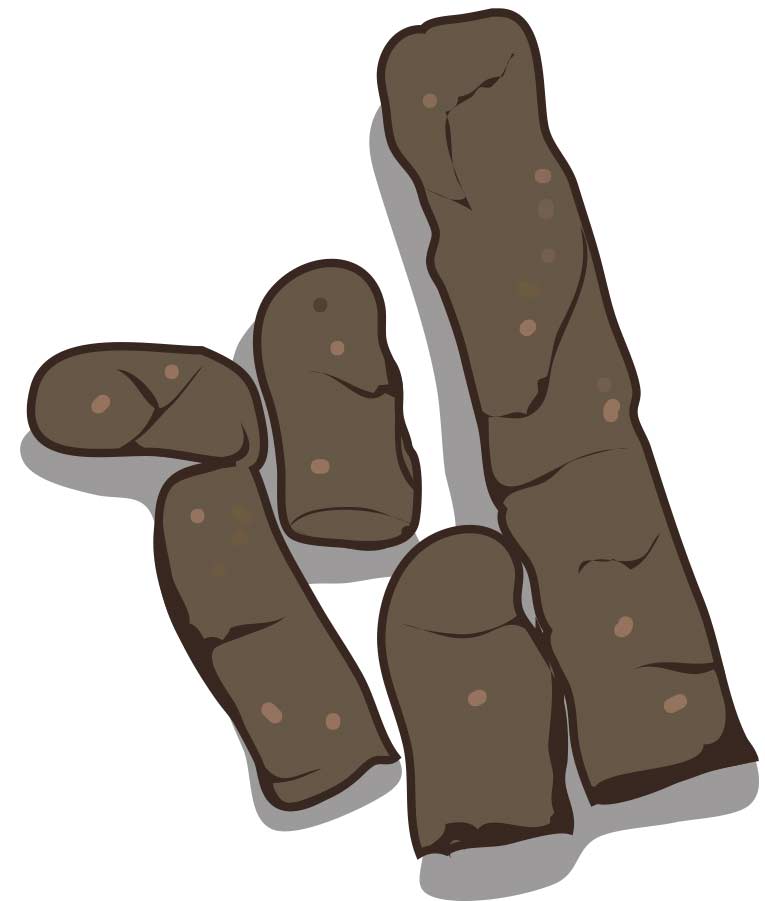
Raccoons range even more widely than foxes and are as mutual equally deflated Mylar balloons. They tend to poop in raccoon "latrines," using the same area over long periods of time. In the wild, they like the bases of copse, tree forks, or raised areas such as fallen trees. Some experts say that poop on big tree limbs or logs is "definitive" of the critter, but I wouldn't go that far.
Scat ranges from black to reddish, a part of their omnivorous ways. It also may exist bleached to white. The poop is often granular-looking, segmented, tube-shaped, and 2 to iii inches long. It breaks hands when disturbed. It somewhat resembles canis familiaris poop, except it contains more undigested food, like seeds and hair. According to Paula Smith, who is familiar with all kinds of poop, raccoon debris are "radioactive." She may be referring to the fact that it may comprise parasitic roundworms and their eggs. If accidentally inhaled, roundworm infections can pb to irreversible brain, heart, or eye damage.
Deer
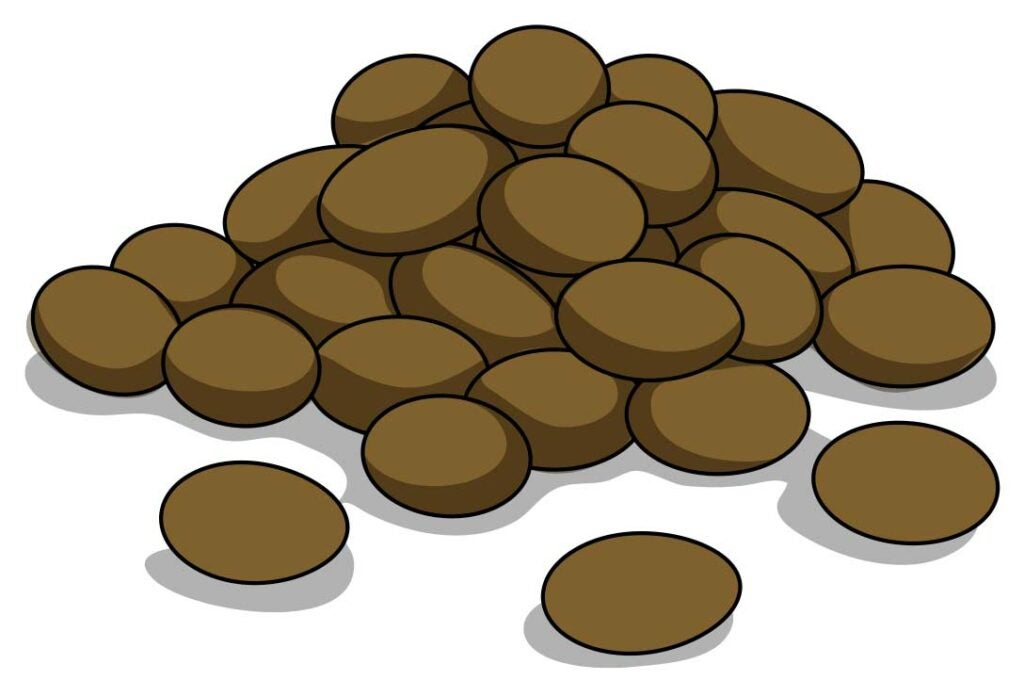
Deer scat (whitetail or muley) looks similar proverbial Raisinets—oval in shape, pellet-like, ½ to ⅝ inches in bore, nighttime brown or blackness in color (usually), and scattered in piles. Information technology may also be found clumped together when their summer and fall diet consists of loftier-moisture foods such as berries, apples, and other succulent plants. Their winter scat is lighter in color and tends to be difficult, consisting mainly of woody fibers. Semi-round, individual debris often indicate deer are concentrating their feeding efforts on browse such as leaves, bark, and mast-producing nut copse like acorns. Those long, lumpy debris that make y'all uncomfortable because they resemble pinecones—and may make you imagine what squeezing out a pine cone would feel similar—are the result of deer eating fruit-producing mast trees, grasses, clover, alfalfa, and the like. They probably don't hurt at all. Generally, shiny debris have a loftier moisture content and are recent. Poop piles are proportional. Large ones betoken big deer and vice versa. If you lot detect large, shiny piles in heavy cover, you lot're probably near a good buck's bedding area.
Elk
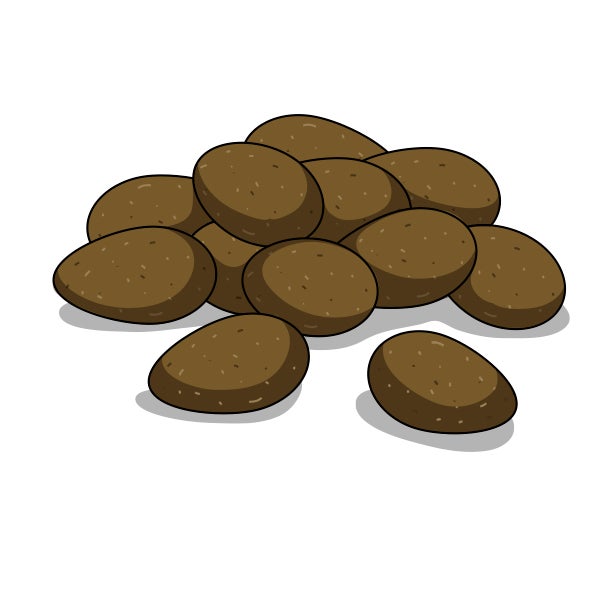
The Shawnee proper noun for elk is "wapiti," which means "white rump," and it's the name preferred by scientists because red deer in Europe are commonly referred to every bit elk. If deer leave Raisinets, elk leave chocolate-covered almonds. Similar that of other ungulates, the scat generally takes the form of pellets during winter, when the diet consists of woody browse. But fifty-fifty in summer, when elk consume fresh grasses and the poop may await similar to cow pies, closer inspection reveals traces of the pellet-similar construction. Generally, moo-cow elk droppings are tapered on both ends, whereas bull elk poop is more dimpled or concave on one end. Big bulls tend to get out debris in large clumps.
Pronghorn

Think runty Raisinets and ones that are a bit more oval in shape than those of deer. As well, pronghorn have no dewclaws. Mature pronghorn bucks often scent mark with urine and scat in a ritualistic manner, known equally SPUD (Sniff-Mitt-Urinate-Defecate). They sniff the basis—often choosing a small found—and then scrape the spot with their forepart hooves to deposit odour from the interdigital glands. Then pronghorn will urinate and defecate in the slight depression. So if you find small debris in a spot scraped bare, it'due south likely a pronghorn. In the distance, you may come across a pronghorn whose expression seems to say, 'You really recollect you're gonna impale me merely considering you found where I pooped?'
Moose
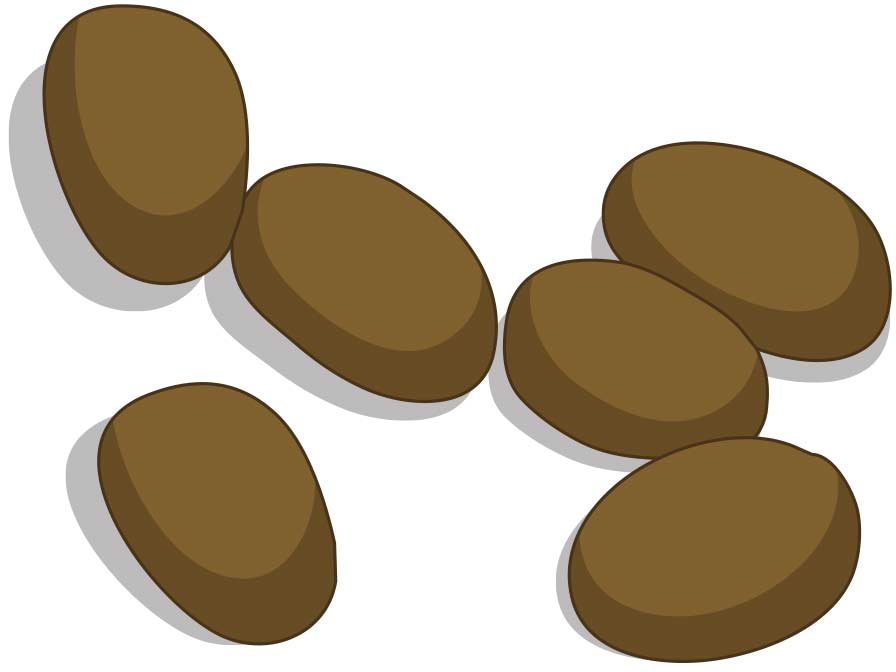
Large elk and small moose leave roughly like droppings, well-nigh an inch long and ⅝ inch in diameter. These are classic fall and wintertime moose pellets, the kind shown on T-shirts and made into moose earrings and necklaces. Nobody makes jewelry out of summer moose poop, when they're eating fresh growth and their scat, overloaded with juices from a moist nutrition, is much looser. In spring in Alaska, many alarmed people telephone call the Alaska Department of Fish and Game to report that there are grizzly carry droppings in their yards. They do not know that at this time, moose may leave behind wet patties that resemble those of brown bears.
Deport
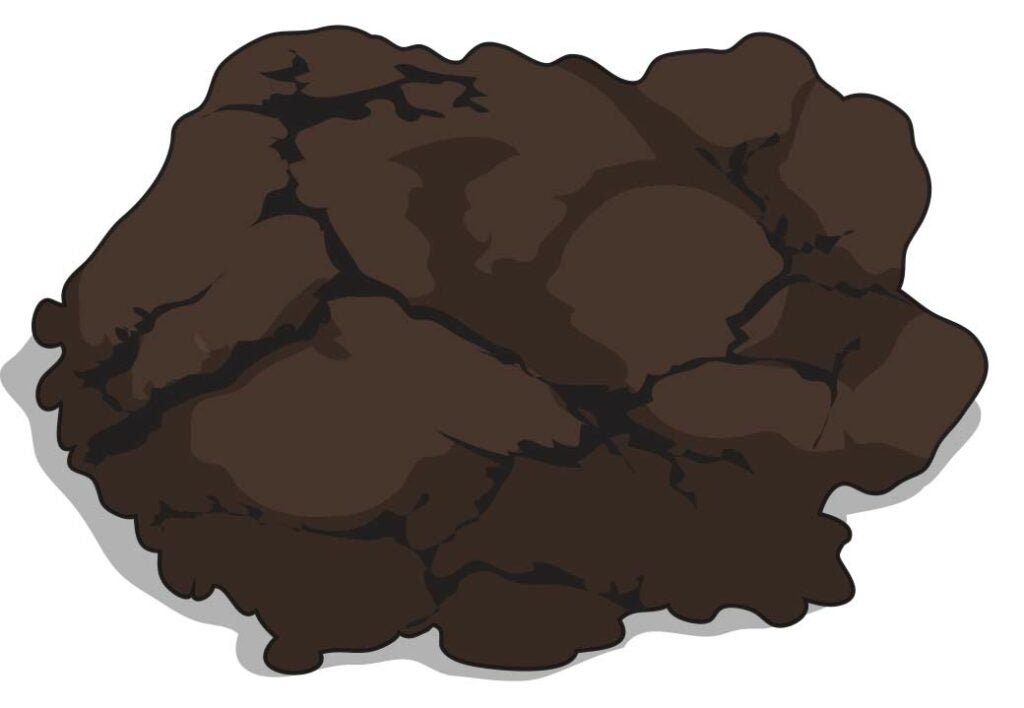
The poop of brown and blackness bears are like, although brown conduct are, on average, larger. If y'all come upon scat that looks like it could have come from Andre the Giant, information technology's from a bear. Bear scat is tubular like man carrion just larger (5 to 12 inches long and 1 ½ to two ½ inches in diameter). It is often tubular with a edgeless end and a slight taper, depending on what they're eating. Bears prefer meat, including carrion, when they can discover it. Just they are mostly vegetarian. Every bit oftentimes as not, the scat is made up of grass, roots, or fruits. You may too find such scat with the remains of ants, pine nuts, or berries. A directly diet of strawberries, for instance, results in a semiliquid mass. And so does the diet of fish eaten by the large brown bears of southern Alaska.
Bobcat
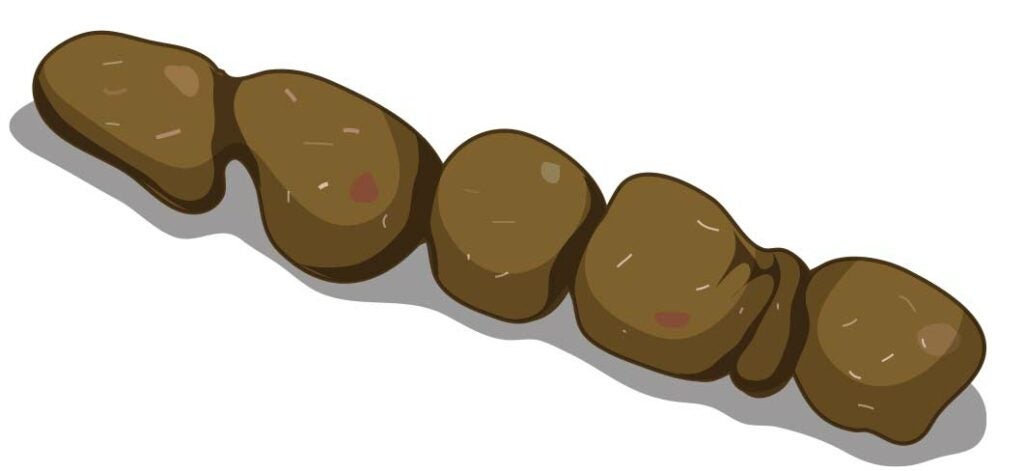
Bobcat scat tends to be segmented, 3 to 5 inches long, tubular, and varying in diameter from ½ to 1 inch. The animals take an excellent digestive system. This means their droppings are hard and compress niggling when stepped on, as well equally that, while at that place are oftentimes bones and pilus present, you need to look closely to encounter them. Bobcats also eat berries and grass.
Similar other small-scale felines, bobcats frequently scratch a blank spot, defecate, and so embrace their scat, although not ever effectively. Hiding their scat is thought to be an ancient response to the danger of predation past larger cats. Withal, equally with coyotes, bobcats marking their territory by pooping in the center of trails or at trail intersections. In other words, they're basics, trying both to hide their poop and advertise information technology.
Mountain lion

Mount lion scat may exist up to v inches long and one ¼ inch in diameter—greater in diameter than a bobcat's. When segmented with blunt ends, it shows the presence of bones and pilus. Like bobcats, they often scratch out areas of leaf litter or soil before leaving their scat. Besides like bobcats, they often embrace their scat, which is probably a response hard-wired into them from a time when they were the prey of even larger felines. Personally, I've ever found mountain lions scary enough without feeling a demand for even bigger cats, such every bit tigers.
Wild turkey
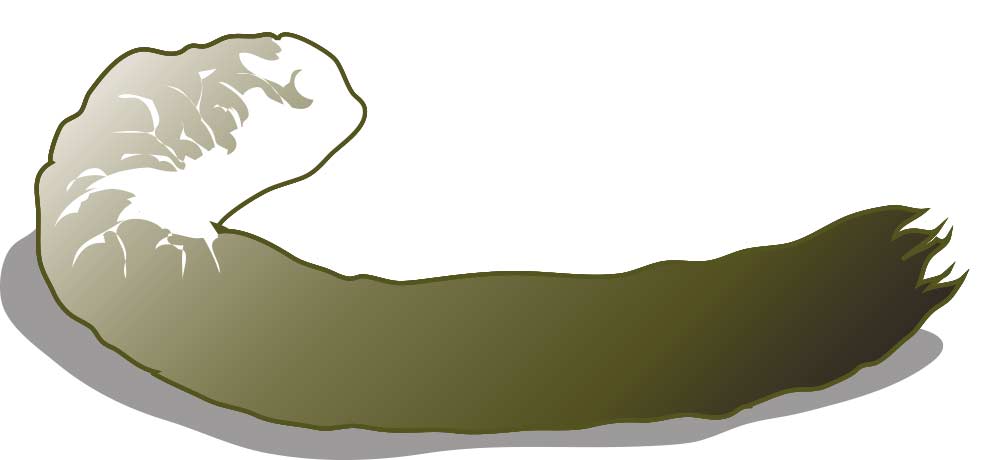
Turkeys are one of the very few critters who decided that you lot should be able to differentiate the sexes past poop. The female's is a screw blob, ⅜-inch in diameter, more or less similar to a snail crush, and white on one cease, the event of uric acrid. The male's is like except that it is J-shaped. This is considering the males have, according to the scientific literature, "rudimentary internal sexual activity organs." If y'all encounter large amounts of turkey droppings and feathers under a tree, you're probably at a roost site, and that'southward a great identify to commencement your hunt the next day.
Source: https://www.popsci.com/story/science/identify-animal-poop/
Posted by: bakerlond1951.blogspot.com

0 Response to "What Poop Belongs To What Wild Animals With Pictures"
Post a Comment